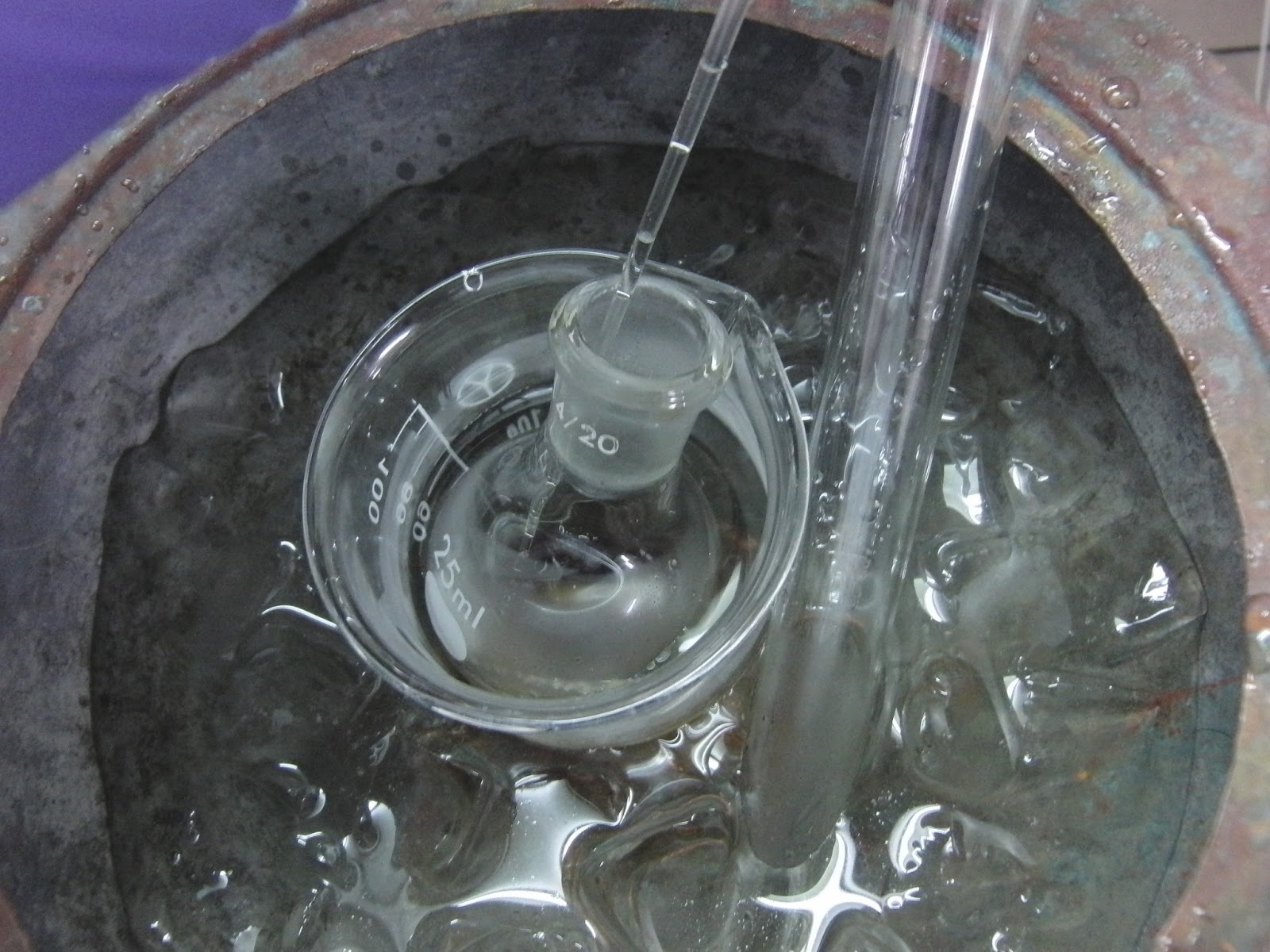The reaction of acetone with benzaldehyde
in the presence of base is a classical aldol condensation. Depending on the stoichiometry
and reaction conditions, these reagents could beused to prepare either
benzalacetone or dibenzalacetone.
The reaction conditions in this experiment are chosen to favor the formation
of dibenzalacetone. The reaction is carried out by adding a mixture of two
parts benzaldehyde and one part acetone to an aqueous ethanol solution of NaOH.
The solvent, aqueous ethanol, also favors the formation of dibenzalacetone. The
reason is that the reactants and intermediates, including benzalacetone, are
soluable in aqueous ethanol and are not removed from the reaction solution by
separation or precipitation. Dibenzalacetone, however, is insoluble in aqueous
ethanol-while the reaction mixture is being stirred, the deep yellow dibenzalacetone
slowly precipitates from the solution.
The work-up consist of filtration, washing, and crystallization of the
product. The critical part of the work-up is the washing. The reaction mixture,
and thus the solid product, contains NaOH, which must be removed prior to
crystallization. A number of washings may be required to remove it. To
determine if the product has been washed sufficiently, each aqueous wash is
tested with pH paper. Final purification of the dibenzalacetone is accomplished
by crystallization from ethanol.
The color of dibenzalacetone is a result of the relatively large conjugated pi system, which can absorb a portion
of the visible spectrum. Dibenzalacetone has been used in sun-protection
prepparations because it also absorbs certain
wavelengths of ultraviolet light.
Mechanism
Aldol Condensation
Reaction Equation:
Chemicals
1.
Acetone:0.400g
2.
Benzaldehyde: 1.400g
3.
95% ethanol: ~25mL
4.
Sodium hydroxide: 1.3g
Procedure
1.
Dissolve 1.3g NaOH in 13mL water
in a beaker.
2.
Add 10mL 95% ethanol and cool
the solution to 20℃
3.
Place 1.4g of benzaldehyde (new
or distilled) and 0.4g acetone in an Erlenmeyer flask. Swirl the flask until a
homogeneous solution is obtained.
4.
Add approximately one-half of
the benzaldehyde solution to the hydroxide solution with vigorous stirring.
Stir the mixture for 10 minutes, then add the remainder of the
benzaldehyde-acetone solution. Continue stirring for another 30 minutes.
5.
Filter the yellow solid with
vacuum, press it as dry as possible, and then transfer it to a clean beaker.
6.
Add 25mL water. Stir the
mixture into a thick paste. Refilter and rewash it.
7.
Air-dry the product.
8.
Calculate the yield and melting
point of dibenzalacetone
Experimental Record
Weight of dibenzalacetone(theory)
|
1.567g
|
Weight of dibenzalacetone
|
1.280g
|
Yield
|
81.7%
|
Melting Point(theory)
|
110~111℃
|
Melting Point
|
109.0~111.0℃
|



































